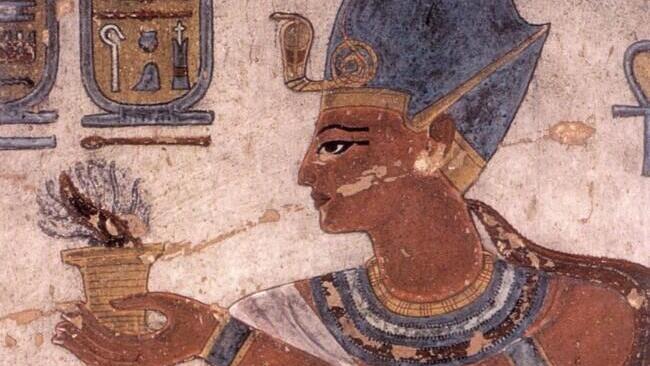Getting your Trinity Audio player ready...
Archaeologists in northern Egypt have discovered the tomb of a military officer believed to have served during the reign of Pharaoh Ramses III (1184–1153 BCE). The burial site, located at Tell el-Maschuta in northeastern Egypt, consists of a mudbrick structure with a burial chamber and three adjoining rooms, according to Egypt’s Tourism and Antiquities Ministry.
Alongside the officer’s remains, archaeologists found a gold ring bearing the image of Ramses III, the last pharaoh to wield significant power over ancient Egypt, as well as several bronze arrowheads. The excavation also uncovered a small ivory box and pottery inscribed with ancient texts, some of which bear the name of Pharaoh Horemheb (1323–1295 BCE), the last ruler of Egypt’s 18th Dynasty.
4 View gallery


3.200-year-old tomb found in Egypt
(Photo: Egyptian Ministry of Tourism and Antiquities)
4 View gallery


Gold ring with figure of Ramses III found in the tomb
(Photo: Egypt State Information Service)
Horemheb, a former military commander and advisor to King Tutankhamun, spent much of his reign restoring order to Egypt. The presence of his name in the tomb remains puzzling. One theory suggests that pottery from an older burial was repurposed for this tomb.
While the ministry did not provide translations of the inscriptions, the artifacts led archaeologists to conclude that the tomb was built for a military commander under Ramses III.
Get the Ynetnews app on your smartphone: Google Play: https://bit.ly/4eJ37pE | Apple App Store: https://bit.ly/3ZL7iNv
Ramses III ruled during Egypt’s 20th Dynasty, a turbulent period marked by conflicts with the "Sea Peoples," a group of armed invaders from the western Mediterranean who raided eastern civilizations, including Egypt, in the 13th century BCE.
He also commissioned the construction of the grand mortuary temple at Medinet Habu near Luxor, which still stands today. Ramses III was ultimately assassinated by multiple assailants using a variety of weapons.
4 View gallery


Bronze arrowheads found in the tomb
(Photo: Egyptian Ministry of Tourism and Antiquities)
Experts outside the excavation team have expressed mixed opinions on the tomb’s interpretation. Anthony Spalinger, an emeritus professor of classics and ancient history at the University of Auckland in New Zealand, told Live Science that further analysis of the inscriptions is needed to confirm whether the tomb’s occupant was a military commander.
Aidan Dodson, a professor of Egyptology at the University of Bristol, believes the tomb was originally built during Horemheb’s reign and was reused multiple times. “It looks like the tomb was originally occupied under Horemheb, reused under Ramesses III, and again during the Twenty-second Dynasty,” Dodson told the outlet.


